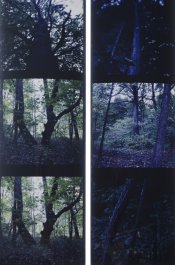New run of tests, this time with this formula:
All at 101F
* Dektol 1+1, 7 minutes, 30s initial agitation, 10s agitation per 30s
* Water stop
* Very quick re-exposure (~30s per film)
* C-41 develop, 4m30s, 30s initial agitation, 10s agitation per 30s (going against Kodak recommendations, which is for 2x per 15s)
* C-41 bleach, 8 minutes
* C-41 fix 6m30s
I tested 4 films in this. Velvia 50, Provia 100F, Lomo Color Negative 100, and Fuji Pro 400h. Results were overall pretty interesting. Dektol 1+1 seems to be closer to "correct" than Dektol 1+3 and HC-110 dil A. All tests conducted on a boring cloudy day (just before raining) with a Pen D3 camera. All ISO examples for E-6 are processed at 7650K/+23 tint. For C-41 films, the ISO tests are processed using 2750K/-4 tint. All lit by daylight backlight for scanning. Examples are "corrected" by opening levels and setting the white/black point of each R/G/B channel until they are just beginning to clip in the image area. Non-ISO examples are processed for "best image"
Provia 100F:
As always, this is the best looking one. Results look very natural, with a bit of blue cast. With this process, it looks pretty close to box speed, but has a surprising amount of over exposure latitude for slide film. Even +2 stops was still pretty reasonable. This would probably look better at 7m30s or 8m in the first developer, as ISO 50 actually looks a bit better despite some blown highlights.
ISO 100:
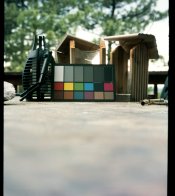
ISO 50:
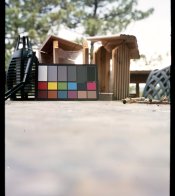
Random test picture:

colors are punchy and nice, with a slight greenish-blue cast with under exposure, (such as -2 stops)
Velvia 50:
Velvia always seems to be the most tricky film with this x-pro reversal process. In HC-110 previously, it will have a thick magenta cast. Apparently with Dektol 1+1, it instead goes to green cast. The cast seems more workable than with HC-110. Colors are really saturated, with greens being especially deep, though also being corrected away due to the green cast. With under exposure it will go blue.
ISO 50:
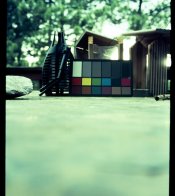
ISO 25:
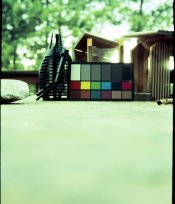
ISO 200:
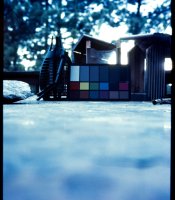
"Best image" version of ISO 50:
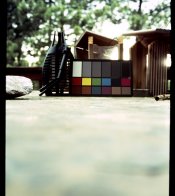
Test shot:
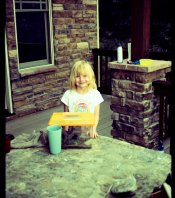
Lomo Color Negative 100
This ended up looking weird, well, more weird than C-41 films usually look in this. Really poor colors and density. I wasn't a fan. Also came out very pink, even with the insane whitepoint set on my DSLR when scanning
ISO 100:
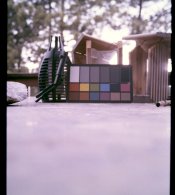
ISO 400
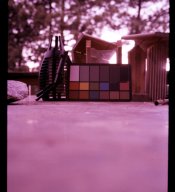
Test shot:
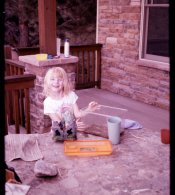
Fuji Pro 400H:
This one took my by surprise. I've never used this film before in this process, so wasn't sure what to expect. Colors are punchy to the raw eye, and with a raw scan. However, scanning while keeping these colors is quite difficult. The raw scans look better than white/black point processed.
ISO 400:
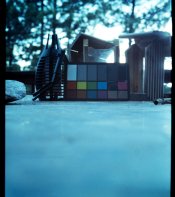
ISO 400 raw (no processing):
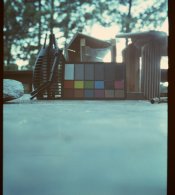
Test shot 1:
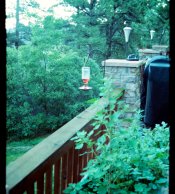
Test shot 2:
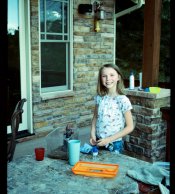
Notes for the looks of the film:
The black strip (ie, where I cut it pulling a strip from the camera) seemed to be improperly fogged on all films. Provia was a very dark blue, rather than nearly opaque black. Velvia was a dark brownish green, with some streaking and uneven density. The Pro 400H seemed to be proper, though the max density still didn't seem very dark. The CN100 max density seemed especially weak.
The white strip (ie, min density/ the leader used for loading into the camera in daylight) for the C-41 films looks correct. However, Provia and Velvia both had a very weak tint to it. I'm not sure if this is just something I'd not noticed before, or something with this process, but provia had a very slight blue tint and velvia a very slight green tint. Both tints are more intense when wet.




















 I shoot 5x13,4x5/120 in my spare time and have done numerous cross processing experiments with fuji crystal archive II, C41 reversal and RA-4 reversal with e6 films. No, this is not what I do for my job, so this is purely rough and experimental. I've shot some 1994 exp. kodak ektrachrome dup. film that's ISO 1-3, dev in hc110 B for 40 mins@70F, exhausted RA-4 CD 20min@102F, BF 15min@102F, STB and formalin afterwards and got velvia-like colors (a bit on the magenta side due to the pH).
I shoot 5x13,4x5/120 in my spare time and have done numerous cross processing experiments with fuji crystal archive II, C41 reversal and RA-4 reversal with e6 films. No, this is not what I do for my job, so this is purely rough and experimental. I've shot some 1994 exp. kodak ektrachrome dup. film that's ISO 1-3, dev in hc110 B for 40 mins@70F, exhausted RA-4 CD 20min@102F, BF 15min@102F, STB and formalin afterwards and got velvia-like colors (a bit on the magenta side due to the pH).
